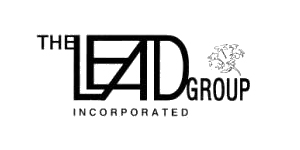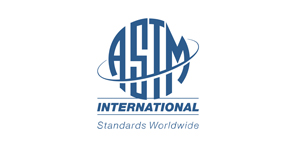
There is extensive literature available on galvanizing in the public domain. This section of the library summarizes literature related to the galvanizing process for hot-dip galvanized steels, starting from a description of zinc and how it protects steel, to the hot-dip galvanizing process, related international standards, and applications.
- 1Basic Facts of Zinc as an ElementThis silvery, blue-gray vital metal is abundant, essential, and common – and even more importantly, infinitely recyclable. Zinc is the 27th most abundant element in the Earth’s crust. It naturally exits in air, water, soil, and the biosphere. Most rocks and many minerals, as well as humans, plants and animals contain zinc in varying amounts. In fact, approximately 5.8 million tons of zinc is naturally cycled through the environment annually by plant and animal life, rainfall, natural phenomena, and other activity.
Related Studies

Zinc
Royal Society of Chemistry
www.rsc.org Zinc is identified as an element in 1746, but known to the Greeks and Romans before 20BC. Discovered by Andreas Marggraf, thhe name is derived from the German, ‘zinc’, which may in turn be derived from the Persian word ‘sing’, meaning stone… read more - 2Zinc Mines in the WorldWorldwide zinc consumption remained steady in 2011, as increased consumption in countries with emerging markets (such as China, Brazil, and India) offset declining consumption in Europe and the United States, according to International Lead and Zinc Study Group statistics.
Related Studies

Uses of Zinc
Geology.com
www.geology.com Centuries before it was identified as an element, zinc was used to make brass (an alloy of zinc and copper) and for medicinal purposes. Metallic zinc and zinc oxide were produced in India sometime between the 11th and 14th centuries and in China in the 17th century, although the discovery of pure metallic zinc is credited to the German chemist Andreas Marggraf, who isolated the element in 1746 … read more

Zinc
U.S. Geological Survey
www.minerals.usgs.gov Domestic Production and Use: The value of zinc mined in 2013, based on zinc contained in concentrate, was about $1.60 billion. Zinc was mined in 4 States at 14 mines operated by 4 companies. Two facilities—one primary and the other secondary—produced the bulk of commercial-grade refined zinc metal… read more - 3Processing of ZincThere are two main processes: the electrolytic process and the thermal process. Over 90% of the world’s production comes from the electrolytic process. The electrolytic process, the process has four stages: a) concentration of the ore b) roasting of the ore in air c) conversion of zinc oxide to zinc sulfate d) electrolysis of zinc sulfate solution
Related Studies

Uses of Zinc
The Essential Chemical Industry
www.essentialchemicalindustry.org Zinc is often found in nature together with lead in sulfide ores. The metals are separated during refining. As zinc is resistant to corrosion and easy to apply, much of it is used to protect iron and steel-based products… read more - 4Applications of Zinc in GeneralMore than 13 million tons of zinc was produced in 2013 worldwide. Sixty percent of this is used for galvanizing to protect steel from corrosion thus prolonging the service life of steel products significantly. Approximately 15% goes into the production of zinc base alloys, mainly to supply the die casting industry, 14% goes into the production of brass and bronze and 8% into the production of compounds including zinc oxide and zinc sulfate. The remainder is zinc alloys, mainly rolled, utilized in semi-manufactured applications including coinage and architectural applications. These first-use suppliers then convert zinc into in a broad range of products. By far the largest application area is construction with 45% of all first-use zinc products used in this area. The transportation sector consumes 25% of global zinc consumption and consumer goods – including electrical and electronic appliances – accounts for 23%. The remaining 7% is used for the manufacture of industrial machinery.
Related Studies

History of Zinc
International Zinc Association
www.zinc.org Centuries before zinc was discovered in the metallic form, its ores were used for making brass and zinc compounds for medicinal purposes. Zinc compounds were in the ores smelted certainly as early as 200 B.C. to obtain copper and which gave alloys of copper and zinc – the brass family… read more

End Uses of Lead
International Lead and Zinc Study Group
www.ilzsg.org The principal consumption of lead is for lead-acid batteries which are used in vehicles, and in emergency systems (e.g. hospitals) as well as in industrial batteries found in computers and fork lift trucks… read more

Application : Zinc Coating
Zinc Information Center
www.zincinfocentre.org The principal consumption of lead is for lead-acid batteries which are used in vehicles, and in emergency systems (e.g. hospitals) as well as in industrial batteries found in computers and fork lift trucks… read more - 5Applications of Zinc in Flat Steel IndustryThere are a number of zinc coatings which are often generically termed “galvanizing,” but each has unique characteristics. These characteristics not only affect applicability, but also economics and performance in the environment. The method of application, adhesion to the base metal, hardness, corrosion resistance, and thickness of each zinc coating varies. This practical aid examines the following zinc coatings: continuous sheet galvanizing, electro-galvanizing, and zinc plating; to help architects, engineers, and other specifiers assess and select the most suitable zinc coating for corrosion protection.
Related Studies

Hot-Dip Coated Sheet Products
The GalvInfo Center
www.galvinfo.com GalvInfoNote 2.1 describes the steel sheet hot-dip coating process, explaining how it is used to make seven different types of coated products. These products, and the specifications to which they are made, are described in more detail below. …. read more

Zinc Coating
Galvanizers Association
www.galvanizeit.org Zinc, a natural, healthy, and abundant element was first used in construction in 79 AD; thus, its characteristics as a well-suited corrosion protective coating for iron and steel products has long been known. The 27th most abundant element in the Earth’s crust, zinc is naturally present in rocks, soil, air, water, and the biosphere, as well as in plants, animals, and humans… read more - 6How Zinc Protects SteelThe main mechanism by which galvanized coatings protect steel is by providing an impervious barrier that does not allow moisture to contact the steel, since without moisture (electrolyte) there is no corrosion. The nature of the galvanizing process ensures that the metallic zinc coating has excellent adhesion, abrasion, and corrosion resistance. Galvanized coatings will not degrade (crack, blister, and peel) as with other barrier coatings such as paint. However, zinc is a reactive material and will corrode and erode slowly. For this reason, the protection offered by a galvanized coating is proportional to its thickness and to the corrosion rate. It is therefore important to understand zinc’s corrosion mechanism and what factors affect the rate.
Related Studies

How Zinc Protects Steel
The GalvInfo Center
www.galvinfo.com Steel sheet is a very versatile product. It comes in many sizes and types, and is applied to many end uses including steel buildings, automotive panels, signs, and appliances. The low cost, strength and formability of steel sheet are some reasons for its widespread use… read more

Galvanic/Bimetallic (including Cut Edge) Corrosion of Galvanized Sheet
The GalvInfo Center
www.galvinfo.com Corrosion reactions require four components: viz., an anode, a cathode, an electrical circuit and an electrolyte. Galvanic corrosion is the corrosion that results when two dissimilar metals with different potentials are placed in electrical contact in an electrolyte…. read more - 7Processing of Hot Dip GalvanizingAs the name implies, continuous hot-dip coating involves, continuous hot-dip coating involves the application of a molten coating onto the surface of steel sheet in a non-stop process. The steel sheet is passed as a continuous ribbon through a bath of molten metal at speeds up to 600 feet per minute. In the molten metal bath, the steel strip reacts (alloys) with the molten metal to bond the coating onto the strip surface. As the strip emerges from the molten bath, it drags out excess liquid metal, much like when an object is pulled rapidly from a container of water. Using a gas-wiping process, a controlled thickness of coating, usually expressed as weight (mass) of coating per unit area, is allowed to remain on the strip surface.
Related Studies

The Continuous Hot-Dip Coating Process for Steel Sheet Products
The GalvInfo Center
www.galvinfo.com The continuous hot-dip coating process for steel-sheet products is widely used and employed in all corners of the globe today. It was originally developed over fifty years ago for galvanizing (zinc-coating). Now it is also used to apply other metals to steel sheet and the early practitioners would hardly recognize the coating lines of today… read more

Continuous Hot-Dip Galvanizing – Process and Products
The GalvInfo Center
www.galvinfo.com Galvanizing is a process for rustproofing iron and steel by the application of a zinc coating. Three of the most-used processes for applying zinc to iron and steel are hot-dip galvanizing, electrogalvanizing, and zinc spraying. Most products are coated using the hot-dip process. .. read more - 8Spangle FormationThe dictionary defines “spangle” as a glittering object. When the word spangle is used to describe the surface appearance of galvanized steel sheet, it means the typical snowflake-like or six-fold star pattern that is visible to the unaided eye. Figure 1 shows the details of a typical spangle pattern of a galvanize coating at a magnification of about 10X.
Related Studies

The Spangle on Hot-Dip Galvanized Steel Sheet
The GalvInfo Center
www.galvinfo.com For many years, galvanized articles made by hot-dip coating techniques were identified by a characteristic spangle appearance. In some cases, this is still true today. However, because of changes in the zinc refining process, in the galvanizing process, in the demands of the marketplace, and health concerns, relatively little hot-dip galvanized steel sheet made today has a visible spangle… read more - 9Selecting Coating Thickness (Weight or Mass) for Galvanized Steel Sheet ProductsThe proper selection of coating thickness to meet a galvanized steel sheet user’s needs requires knowledge of the corrosiveness of the environment in which the product will be used. The thickness of the zinc coating largely determines its ultimate life, but it is not used directly to specify the amount of coating. GalvInfoNote 1.1 explains why galvanized sheet coatings are specified, not as thickness, but as coating weight (inch-pound system) or coating mass (SI system).
Related Studies

Selecting Coating Thickness (Weight or Mass) for Galvanized Steel Sheet Products
The GalvInfo Center
www.galvinfo.com The proper selection of coating thickness to meet a galvanized steel sheet user’s needs requires knowledge of the corrosiveness of the environment in which the product will be used. The thickness of the zinc coating largely determines its ultimate life, but it is not used directly to specify the amount of coating… read more

Understanding Coating Weight Designations for Zinc-Based Coatings on Steel Sheet
The GalvInfo Center
www.galvinfo.com For many years, galvanized articles made by hot-dip coating techniques were identified by a characteristic spangle appearance. In some cases, this is still true today. However, because of changes in the zinc refining process, in the galvanizing process, in the demands of the marketplace, and health concerns, relatively little hot-dip galvanized steel sheet made today has a visible spangle… read more - 10Applications of Galvanized Steel SheetsApplication of Galvanized steel sheets : HVAC ducting, White goods, Air conditioners & Refrigeration systems, electrical panels water heaters and coolers, Metal ducking, Roofing, Steel Doors, Furniture, Automobile, armour of underground cables’ cable trays grills, mesh, false celling, partitions etc,
- 11National and International Standards Related to Galvanized Steels SheetsASTM A653/A653M-15 Standard Specification for Steel Sheet, Zinc-Coated (Galvanized) or Zinc-Iron Alloy- Coated (Galvannealed) by the Hot-Dip Process: EN 10346-09 -Continuously hot dip coated steel flat products — Technical delivery conditions: JIS G3302 – Hot-dip zinc-coated steel sheets and coils: ISO 3575-2011- Continuous hot-dip zinc-coated carbon steel sheet of commercial and drawing qualities

- 12Why Lead is Added to Zinc Bath Used for GalvanizingLead promotes spangle formation. Lead is miscible in liquid zinc to about 0.5%. Levels above that will settle to the bottom of the galvanizing bath as an immiscible lead-rich liquid.
Related Studies

The Spangle on Hot-Dip Galvanized Steel Sheet
The GalvInfo Center
www.galvinfo.com For many years, galvanized articles made by hot-dip coating techniques were identified by a characteristic spangle appearance. In some cases, this is still true today. However, because of changes in the zinc refining process, in the galvanizing process, in the demands of the marketplace, and health concerns, relatively little hot-dip galvanized steel sheet made today has a visible spangle.. read more - 13Grades of Zinc Available for Continuous Hot Dip GalvanizingZinc plays a crucial role in continuous hot-dip galvanizing. Using the correctly specified grade of zinc, continuous galvanizing grade (CGG) alloy, or master alloy is key to producing a galvanized product that meets the requirements of the market place. Close control of the amount of aluminum in the zinc is critical to achieving good adhesion to the steel substrate. To accomplish this, the galvanizer must be able to depend on a supply of raw zinc ingots that meet specific composition limits. This is accomplished through a series of ASTM standards that cover zinc products. GalvInfoNote 5.2 at the GalvInfo Center (see link below) reviews the zinc grades available for continuous hot-dip galvanizing and the ASTM documents that govern them.
Related Studies

Zinc Grades Used for Continuous Hot-Dip Galvanizing
The GalvInfo Center
www.galvinfo.com Zinc plays a crucial role in continuous hot-dip galvanizing. Using the correctly specified grade of zinc, continuous galvanizing grade (CGG) alloy, or master alloy is key to producing a galvanized product that meets the requirements of the market place… read more - 14Effect of Lead in Zinc on Galvanized Steel Performance/Durability• Spangle darkening • Delayed adhesion failure • Not suitable for painting applications
Related Studies

Premature Darkening Problem and its Prevention in Galvanized Sheet Surface
Science Direct
www.sciencedirect.com In the engineering and construction sectors, hot-dip galvanized steel sheets are preferred by users for their beautiful appearance consisting of large flowery grains termed ”spangles”; originating from the solidification pattern of the zinc layer…. read more - 15Alternatives to Lead in ZincThe use of antimony mitigates the health concerns of lead, however spangle boundary corrosion can remain an issue.
Related Studies

The Spangle on Hot-Dip Galvanized Steel Sheet
The GalvInfo Center
www.galvinfo.com For many years, galvanized articles made by hot-dip coating techniques were identified by a characteristic spangle appearance. In some cases, this is still true today. However, because of changes in the zinc refining process, in the galvanizing process, in the demands of the marketplace, and health concerns, relatively little hot-dip galvanized steel sheet made today has a visible spangle… read more - 16New Clause in ASTM for Galvanized Steel Sheets Limiting the Lead in Zinc to 90ppm6.2 Zinc Bath Analysis—The bath metal used in continuous hot-dip galvanizing shall contain not less than 99 % zinc, with a lead level not exceeding 0.009%. NOTE 3—To control alloy formation and promote adhesion of the zinc coating with the steel base metal, the molten coating metal composition normally contains a percentage of aluminum usually in the range from 0.05 to 0.25. This aluminum is purposely supplied to the molten coating bath, either as a specified ingredient in the zinc spelter or by the addition of a master alloy containing aluminum. Specification B852 specifies continuous galvanizing grade (CGG) zinc alloys, including multiple zinc alloys, that both enable the molten coating to be controlled within 0.05 to 0.25 % aluminum and to not exceed 0.009 % lead. Specification B6 specifies certain grades of zinc that do not exceed 0.009 percent lead, but contain lower levels of aluminum.
Related Studies

Standard Specification for Steel Sheet, Zinc-Coated (Galvanized) or Zinc-Iron Alloy-Coated (Galvannealed) by the Hot-Dip Process
ASTM International
www.astm.org This specification covers steel sheet, zinc-coated (galvanized) or zinc-iron alloy-coated (galvannealed) by the hot-dip process in coils and cut lengths. The material is available in several designations as follows: commercial steel, forming steel, deep drawing steel, extra deep drawing steel, structural steel, high strength low alloy steel, high strength low alloy steel with improved formability, solution hardened steel, and bake hardenable steel… read more